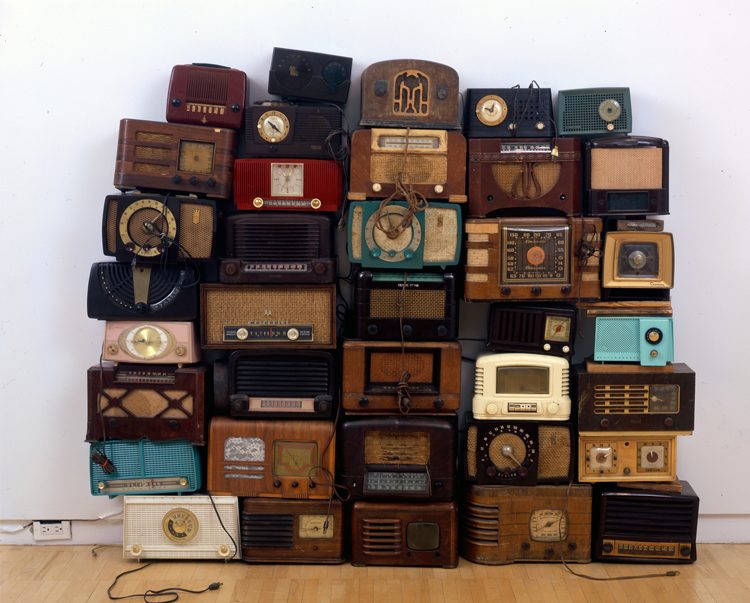
Whitfield Lovell, After an Afternoon, 2008. Radios with sound, 59 x 72 x 11 in. Courtesy DC Moore Gallery © Whitfield Lovell and DC Moore Gallery, New York
In After an Afternoon, Whitfield Lovell omits the human figure, instead conjuring the aural past with sounds emanating from 37 vintage radios, some with stopped clocks and all stacked to approximately human height. The radios play three tracks: Billie Holiday singing “Yesterdays” and “Strange Fruit,” a Walter Winchell WWII news broadcast, and an excerpt from the 1940s radio program The Beulah Show. The Beulah Show aired on the radio from the late 1940s into the early 1950s, when it was adapted for television. It was the first sitcom to feature an African American as the main character, though it was continually criticized for contributing to negative racial stereotypes. Marlin Hurt, a white man, originally provided the voice of the main character Beulah (along with other characters) until his death in 1946, when Hattie McDaniel took over the role. The recording used here features the voice of Amanda Randolph, who voiced Beulah from 1953–1954.
After an Afternoon conveys overlapping narratives from the privacy of the home to the turmoil of the warfront, drawing on the connection between sound and memory to evoke the racial climate of a pre-civil rights era.
Whitfield Lovell: The Kin Series and Related Works is on view through Jan. 8, 2017.



